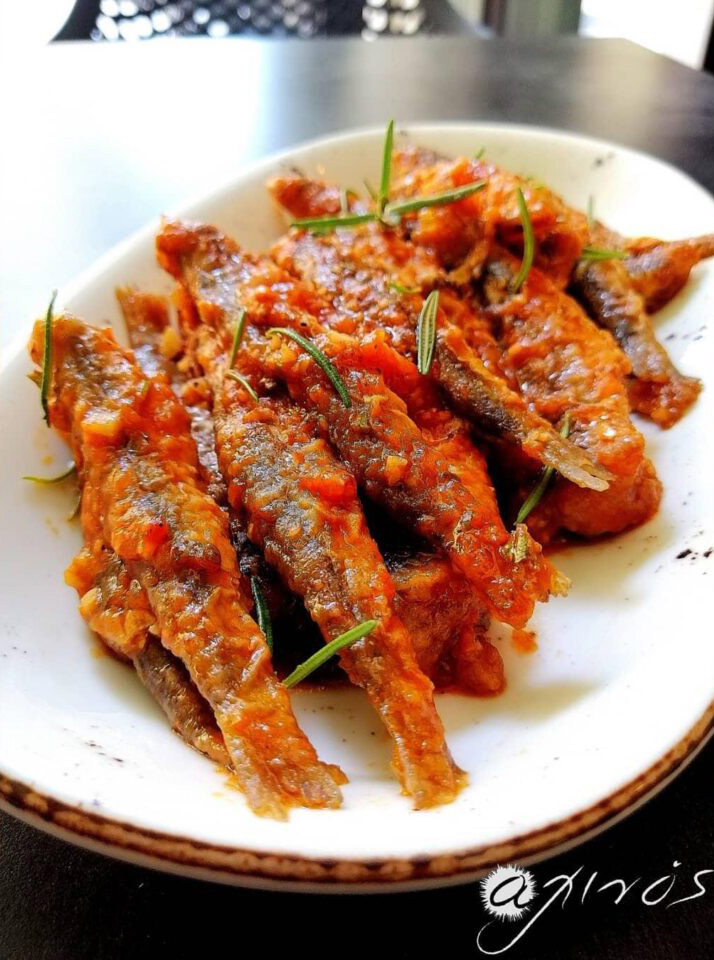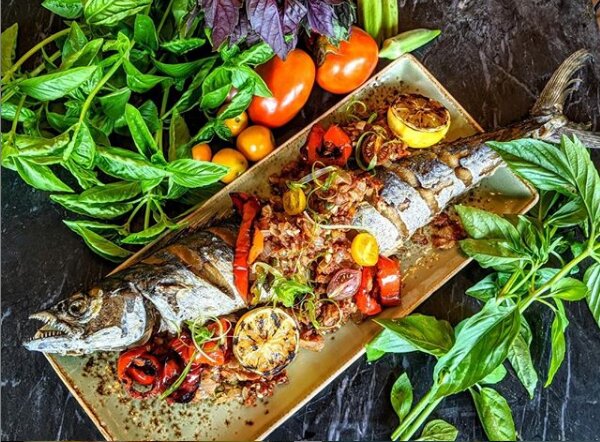
Disclaimer: Before reading, be warned, we shall be taking your taste-buds on a journey to the Ionian islands where you will indulge in the history and the authenticity of the savoro dish. Since this article may place you in a precarious position between a clash of cultures during centuries of culinary history, it is advisable that you have suitable travel insurance. Ideally, such insurance coverage will encompass any unforeseen and unimaginable occurrences. For further information about Corfiot cuisine, please, turn to the lovely staff of Bella Vista Beach Hotel & Studios.
SAVORO ETYMOLOGY
Psari savoro, savore, pesce en saor and savoro are all different names for the same dish. As tradition has it, this is the part where we dive into the etymology; however, information on the origin is inconsistent.
There are some, for example, that would say that the word savoro came from Savoy and was likely brought by Venetian sailors through a dish called pesce en saor – marinated fish carried on the ships. Others would refer to the Italian word sapore, which means sauce, taste or flavour. Yet, some sources would trace the word all the way to Byzantium.
Whatever the etymology, savoro is a preserving sauce and its original purpose was no doubt preservation. The Middle Ages had a distinct lack of refrigerators.

THE FLAVOURS OF SAVORO
Savoro was the staple food of Venetian sailors as it could be stored for a long time. It was one of few foods that helped to prevent the crews from getting scurvy due to vitamin deficiency. The vinegar and olive oil preserved the fish, and the rosemary acted as an antiseptic. It was much later, in the 18th century, when the English too benefitted from this method.
Savoury fish was not only the food of the fishermen, but also of the inhabitants of the Ionian islands. It’s a recipe which you can find in Corfu, but also in other islands surrounding the Aegean and Ionian seas.
Today, the dish is not prepared exclusively with vinegar and rosemary. Some add onions, raisins, black currants or pine nuts to the fried fish to give it extra flavour. The dish is used as meze, and it is often made with red mullets. This fish has a special place in the Greek heart as the ancient Greeks regarded them to be sacred, while the Romans paid steep prices to watch their colour turn from red to gold.

SAVORO – A SOCIAL CLASS DETECTOR?
In the book II Veneto in cucina by Signor Ranieri da Mosto, it is mentioned that the Venetians could distinguish one’s social class by their choice of fish for this dish. Poor people used the sardine, the better off chose flounder, while the wealthy used sole.
DIFFERENT METHODS OF COOKING SAVORO
The ways of preparing this dish vary across different islands. For example, in Corfu, the sauce is based on vinegar, and the soaked small fish is served cold. In Crete, however, pork liver, red pumpkin, and bud snails are more commonly used instead of fish. In Cyprus, the cold fish dish is prepared with sprats or anchovies. Cypriots would also re-use the fried fish from the day before and use the leftover oil to make a thick tomato sauce with which they would cover the fish.
Despite the culinary differences, savoro is traditionally eaten as an appetiser on the day of the Annunciation (usually combined with the cod garlic) and on Palm Sunday.

SAVORO – NOT UNIQUELY GREEK?
Although savoro is a staple in the Corfiot diet, it is not unique to Greece. Escabeche is the name of a few dishes in Spanish, Portuguese, Filipino, and Latin American cuisines which refers to fish or meat marinated in an acidic sauce. The same food is known as escovitch fish in Jamaica; escabecio, scapece or savoro in Italy, and scabetche in North Africa. There is something that unites these countries by the sea, and it is their unbridled passion for food. That passion is ultimately expressed as savoro.

TRY SAVORO FOR YOURSELF!
Now that you know a bit about the savoro dish, it’s time to grab some golden crusty bread and dip it into the sauce. Do not be shy to eat the fish with your hands and slip crisp rosemary needles in with a mouthful of fish. It’s the traditional way!
Kαλή όρεξη (kali órexi), or bon appétit!











